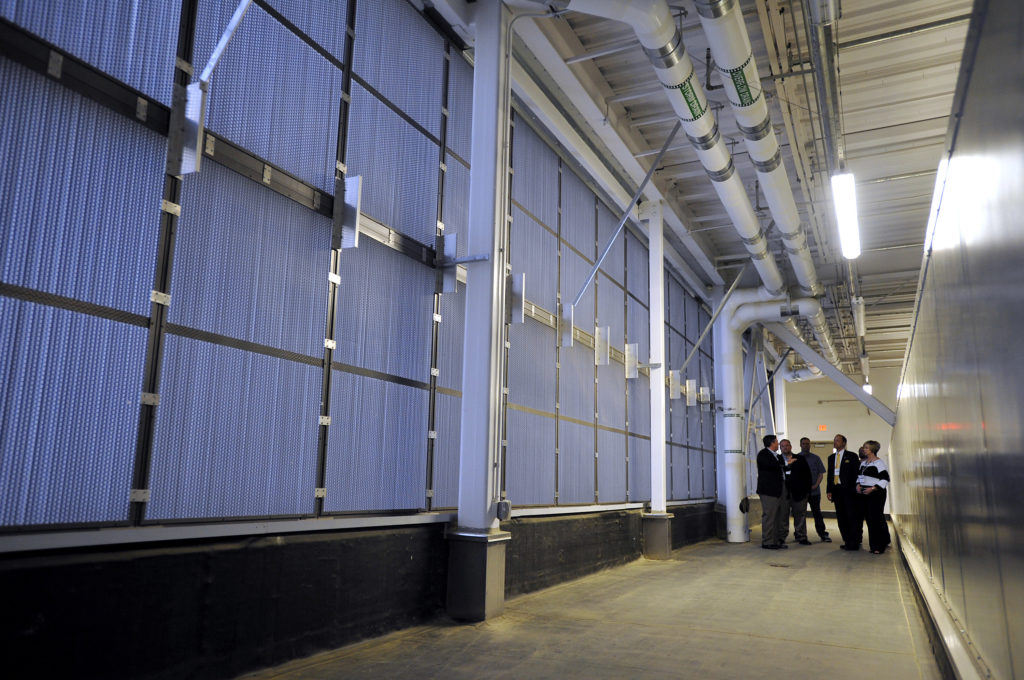Net-positive water usage: Data centers and tech companies committing to change

As companies endeavor to become “water positive” many are taking a multi-layered approach by reducing the water needed to run data centers and corporate facilities.
Data center operators and many of the world’s largest tech companies are taking steps to ensure the long-term sustainability of water supplies by quantifying water usage, understanding how to assess associated service risks and developing mitigation plans that will allow them to maintain the reliability of their operations — all while reducing overall water usage.
Data centers rely on local utilities to provide the continuous water supplies needed to keep servers cool. However, water providers are not obligated to the reliability commitments that data centers require to ensure uninterrupted operations. Water, especially in certain western states, is dwindling in supply and could disrupt continuous access to data as the situation worsens in the coming years. Tech companies are looking for ways to be less dependent on utilities and to put less pressure on municipal water supplies.
While, up to this point, many organizations in the tech space have adopted ESG (environmental, social and governance) targets to reduce water usage, a new trend by some of the world’s tech giants are going beyond simply decreasing water usage and moving instead towards water replenishment and watershed health as their new, more ambitious water conservation targets.
Facebook, Google and water replenishment goals
Big tech players, including Facebook, Google and Microsoft, are already promoting their goals not just to reduce water but to move towards replenishing it — and some have even more ambitious plans.
For example, Microsoft aims to replenish more water than it consumes by 2030. Google has pledged to replenish 20% of its water usage by 2030. Facebook, which used 3.7 million cubic meters of water in 2020 alone, also has 2030 water replenishment goals.
Other big-name companies that have pledged to focus on water replenishment and increase sustainability include:
- 3M
- Intel
- IBM
- Apple
As companies endeavor to become “water positive” many are taking a multi-layered approach by reducing the water needed to run data centers and corporate facilities while investing in, and protecting, natural waterways and improving access to clean drinking water.
In another positive reflection of how seriously companies are taking the job of water restoration, some tech powerhouses, such as Facebook and Google, have also promised to share their findings and tech with others to help accelerate overall water initiatives and “pay it forward.”
A necessary shift in priorities: CEOs and the pledge to reduce water stress
In 2020, the UN Global Compact introduced a CEO-led initiative known as the CEO Water Mandate to help companies “develop, implement and disclose comprehensive water strategies and policies.” Here too, global CEOs emphasize sharing data and learnings to solve for water resiliency and replenishment.
Founding companies of this new organization include Microsoft, and in the first year, membership has grown to include 19 global organizations with a shared market capitalization of $2.8 trillion. Their goal is three-fold:
- Deliver net-positive water impact
- Develop and implement water resilient supply chains
- Provide public and corporate outreach to convince other industry leaders to follow suit
Meeting the urgency of the moment
The timing of these companies pushing to become water positive isn’t a surprise. With many companies headquartered in the western United States most widely affected by drought, saving water is not just good PR — it makes good business sense. And, with water resources being placed under pressure the world over, water conservation has become a global issue. While infrastructure issues can play a role in water delivery, the bottom line is climate change is affecting precipitation patterns, and these changes are affecting communities and businesses alike.
For example, according to the OECD (the Organization for Economic Co-Operation and Development), 47% of the world’s population will be living in geographical areas with strained water supplies by 2030. In the next 20 years, global water demand will outstrip supply.
Ultimately, technology companies use a lot of water (and energy) no matter where they run their data centers and helping contribute to finding solutions that help protect precious water resources can help them retain business resiliency without taking more than their share.
Shifting approaches to water consumption
The U.S., until recently, has been perceived as “water-rich.” As a result, data center cooling processes have traditionally relied on wet cooling towers, which are known to be water-intensive. In contrast, in Europe, for example, wet cooling towers are rarely, if ever, used. Instead, there is a preference for evaporative and adiabatic cooling systems. However, no matter the system, water is needed at some point in the process, and being as efficient with the usage will help reduce water stress in drought-prone areas.
Beyond data center cooling processes, there are many other factors impacting access to water supplies. For example, an issue the world over are inefficient or dated delivery systems. It is estimated that, in urban centers, by 2030, 100-120 billion cubic meters of water could be saved by simply reducing leaks in bulk water supplies.
Implementing Internet of Things sensors as well as leveraging artificial intelligence and machine learning at strategic places along the water supply infrastructure can help detect leaks early, predict problem areas and foresee changes in water usage that can help stave off spikes in water usage based on water loss, equipment damage or inefficient use.
Encouraging information sharing: a potential industry-wide victory
Google and Facebook have already pledged information sharing. Similarly, while not yet committed to net-positive water usage, Dell is committed to gathering data, including tracking and reporting usage, improving efficiencies and adopting/incorporating water-efficient solutions in new facilities. In addition, the public willingness to share water-related data is a positive sign of how the tech and water industries could work together to reach water replenishment goals — and help other companies do the same.
As we move into 2022, expect more companies to move towards public water replenishment pledges and a willingness to share their approaches in a meaningful way that includes sharing technology insights and insightful KPI analysis.
Source: Water Online








